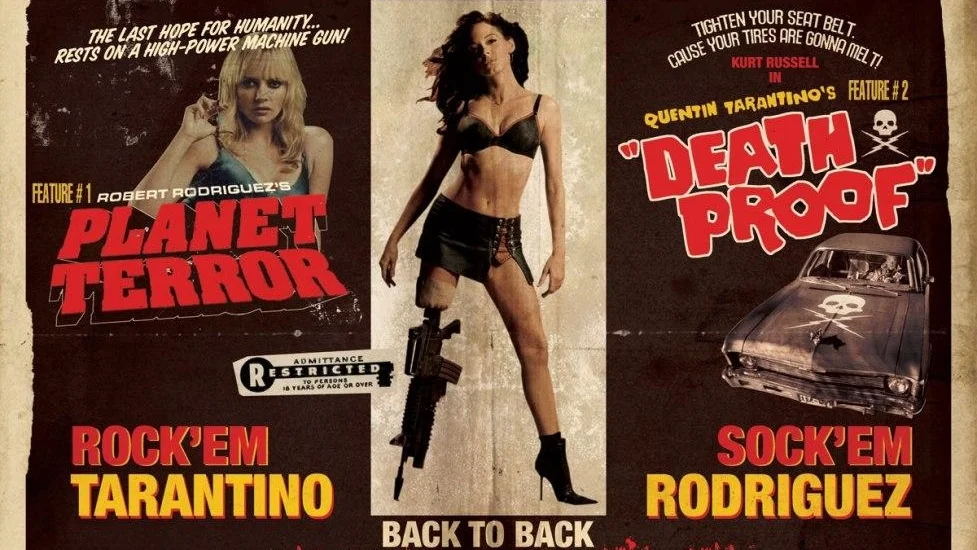A Quarter Mile at a Time: The Fast and the Furious (2001)
After sixteen years, eight films, hundreds of crashed cars, and enough Corona bottles to fill an empty swimming pool, it’s easy to forget that the Fast and the Furious franchise began with a tuna salad sandwich on white bread—no crusts. That’s the sandwich undercover cop Brian O’Connor (Paul Walker, “who looks a little like white bread, no crusts himself” according to Roger Ebert’s review) orders every day for three weeks, slyly eyeing the cute girl who works at the hazy California café. But it’s the girl’s street-racing brother Dominic Toretto (charismatic, bullet-headed Vin Diesel) that Brian really wants to get close to, triggering a friendship that would become the lynchpin of one of the biggest action movie franchises in the world. But for all the globetrotting, rubber-burning, tank top-wearing excess of the later films, Rob Cohen’s The Fast and the Furious is a surprisingly humble beginning.
I know, I know, “humble” is a weird word to describe a movie where Paul Walker and Ja Rule race in the Mountain Dew and Mountain Dew: Code Red of cars. But in 2017, an era where action movies are conceived with seven sequels and a Universal theme park ride in mind, it’s surprisingly refreshing to re-watch an action movie that has no other pretensions than being a fun, summer popcorn flick. Its very title, plucked from a 1955 Roger Corman-produced cheapie, paints it as a successor to the adrenaline-pumping car chase flicks that packed Drive-In theaters once upon a time. When the haul, soon to be hijacked by Dom and his true love Letty (Michelle Rodriguez, rocking the ultimate “choker, bare midriff, and combat boots” fashions of the early 2000s), in the first scene of the movie is revealed to be clunky old TVs and VCRS, I smiled at how endearingly low stakes it all is, especially compared to the elaborate MacGuffins of the sequels.
When The Fast and the Furious was released, the Point Break comparisons were inevitable, though the plot of an undercover cop infiltrating a gang of thrill-seeking criminals goes all the way back to gangster films like White Heat. Furious and Point Break even share the same ending, with our hero letting go of the criminal he’s come to respect and then defiantly walking away from his life as a law-enforcer. The Fast and the Furious is the Point Break of the 21st century, even more than the Point Break remake was—and that film probably wouldn’t even exist without the Furious franchise, bringing the saga full circle.
The unoriginality of the film’s story would be damning if not for the chemistry between the two leads. With his golden curls and baggy jeans, Paul Walker looks angelic and impossibly young, like he should be bugging his mom for tickets to Vans Warped Tour instead of carrying a badge and gun. Vin Diesel’s Dom is an intense, magnetic presence from his first moment onscreen; he knows how to beat your ass with a wrench, but there’s also a tenderness there that not every action star can project. Dom leaving his own party to give Letty a massage is a sweet moment that’s somehow even hotter than the sweaty garage makeout scene later in the movie. It’s completely believable that Brian and the other characters in Dom’s orbit would follow him to the ends of the earth—and in the sequels, they do.
For all the charm of its heroes, The Fast and the Furious is often crushingly stupid. Women who aren’t Letty or Dom’s sister Mia exist as hood ornaments, offering threesomes as prizes for winning racers and flashing thongs at the camera. The movie’s approach to sexuality feels as though it were pulled from the mind of a Four Loko-chugging teenager, most prominently when Brian’s rival Vince hurls an anti-gay slur at him (a jarring reminder that this movie was made in 2001) and when Letty chases away Dom’s groupies with the immortal line, “I smell…skanks.” Hell, I could easily make a review of this film repeating only its most quotable dialogue. “What is this guy, sandwich crazy or something?” “If you want time, buy the magazine!” Dom’s pronouncement that “I live my life a quarter mile at a time” seems like a zen koan in comparison.
But, dear god, is this movie watchable. Maybe it’s the earnestness in Paul Walker’s baby blues that keeps him from seeming like a total creep when he lies to Mia and then sleeps with her. Maybe it’s the gravelly way Dom invokes “family,” which makes part of me want to embrace a life of illegal street-racing and truck hijacking the way some kids want to run away and join the circus. Maybe it’s the action scenes that make you turn to your buddy and say, “Oh shit, did you see the guy dodge shotgun blasts while hanging from a truck?”
The Fast and the Furious has something—that certain, undefinable “it”—that sets it above the average action flick that’s as disposable as a gum wrapper when summer blockbuster season ends. My automobile expertise begins and ends with “cars go vroom,” and yet I’m enthralled with Furious’s ridiculous world of sweat-sheened, NOS-addicted street racers. It’s fascinating to re-watch the film and appreciate its smaller and more intimate scale, though its Point Break-Lite formula couldn’t have sustained itself as a franchise without re-invention. With its great cast and fun action set pieces, The Fast and The Furious had all the rights parts to begin a major movie franchise—though it would take a few more movies before the engine really started running.





